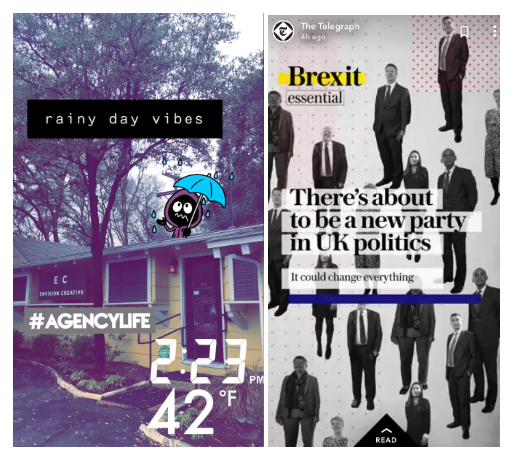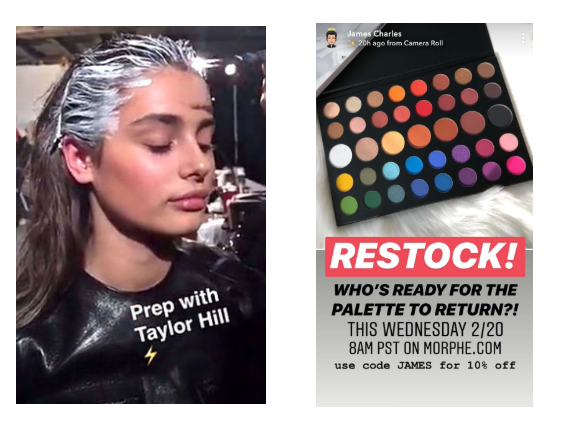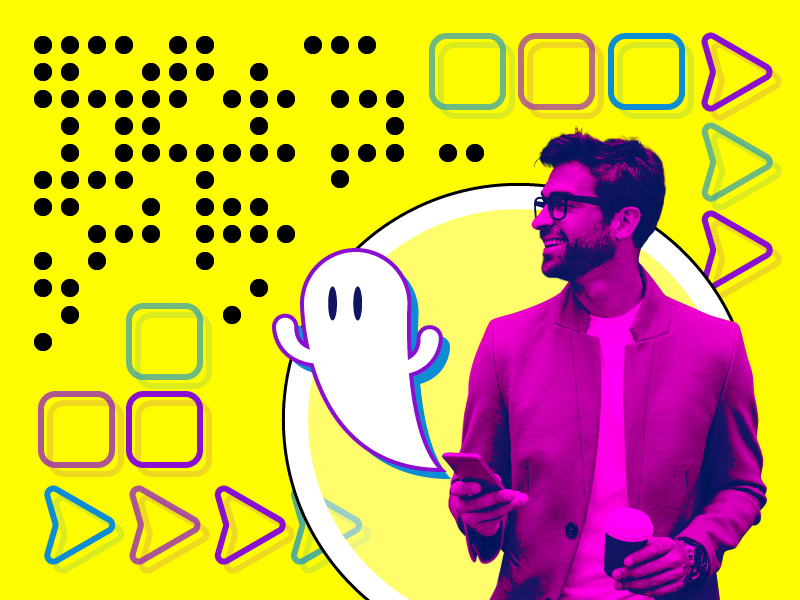Whether you love it or hate it, Snapchat seems to be here to stay. Not quite Instagram and not quite Facebook, Snapchat lives in an in-between world that mixes the ephemeral nature of the internet with the new right-this-minute communication style we’ve come to expect from texting. But with over 188 million active, daily users, Snapchat might not be a platform your business can afford to ignore.
In today’s post, we’re going to cover ALL things Snapchat!
What even is Snapchat?
Snapchat started as a social messaging platform that allowed users to send photos, videos, and text messages back and forth that disappear once they’ve been opened. Although these videos, texts, and photos “self-destruct” after being viewed, users can still take screenshots. Eventually, Snapchat released an update that allowed users to post photos or videos to their story. Stories are posted in chronological order and can be viewed by all of the user’s friends. These photos and videos stay up on the story for 24 hours before disappearing.
Users can easily respond to stories by swiping up or they can send other users stories directly to their friends. Text, drawings, filters, geotags, lenses, and bitmojis can all be added to snaps and stories. The Discover page contains stories posted by popular influencers like Kylie Jenner and James Charles as well as media publishers like Vice, Daily Mail, The Telegraph and CNN.

Should my brand be on Snapchat?
It depends! Snapchat doesn’t work for all brands. In some cases, it can actually do more harm than good. Here are some things you need to know before deciding if your brand should take advantage of this platform.
What is Snapchat’s demographic?
- Between the ages of 13-24
- 45% between 18-24
- About 70% of users are female
- Gen-Z and millennials
What type of content would I post on Snapchat?
Snapchat should capture the everyday life of a brand. Keep the content casual and engaging. It is extremely effective for fashion, lifestyle and make-up brands. Some examples are:
- Sneak peeks of new products
- Promotional codes and discounts
- Influencer takeovers
- Competitions
- Fashion shoot preparations
- Runway shows
- Behind-the-scenes (in the office, design studio, showroom, warehouse, at a photoshoot, etc.)

If you don’t think your brand has content that is interesting enough on its own to tell a story and engage users, then this platform is probably not for you.
What sets Snapchat apart from other social media platforms?
- More personal and authentic
- Humanizes the brand because content is unfiltered and in-the-moment
- Most of the content is behind-the-scenes, which makes followers feel like they have VIP access
- Creates and maintains brand loyalty, which in the long-term can increase sales and ROI
- Allows you to really take advantage of the brand’s voice
So how can Snapchat damage my brand?
Snapchat can be a great customer service tool because users are able to easily respond to stories and engage in private conversations with the brand. If you are not able to be responsive, this can damage your brand’s authority. You will also need to post multiple times a day to engage with your audience, so if you are unable to do this, followers will lose interest. It will also hurt your brand if you try too hard to be relatable to Snapchat’s audience and lose track of your voice and purpose.
Another potential disadvantage of Snapchat is that followers need to add you directly by your exact username, so if you’re a brand that already has a big following this could be an effective marketing tool. If you want to use social media to grow your following, this platform will not be effective.
Can we track metrics on Snapchat?
Snapchat makes it pretty difficult to track metrics. By default, Snapchat only shows you how many people viewed and screenshot your story. Snapchat Insights is a new feature but is only available to influencers and brands who are verified and already have a large following. There are other Snapchat analytic tools such as Snaplytics and Delmondo, but they only give basic metrics and can be expensive or provide incomplete data.
Snapchat or Instagram?
Snapchat and Instagram have similar features, but if you are looking for a larger and older audience, Instagram is the app for you. Instagram makes it easier to track analytics and allows brands to link their products to posts, making it easy for consumers to shop directly through the app. Also, advertising on Instagram is cheaper than it is on Snapchat.
So if you have interesting content that can tell an engaging story, your target audience is between the ages of 13-24, and you are looking to create brand loyalty and maintain a more open and personal relationship with your audience, Snapchat can be a great marketing tool for your brand.
-FINAL(01-00)-White&Blue-01.svg)





